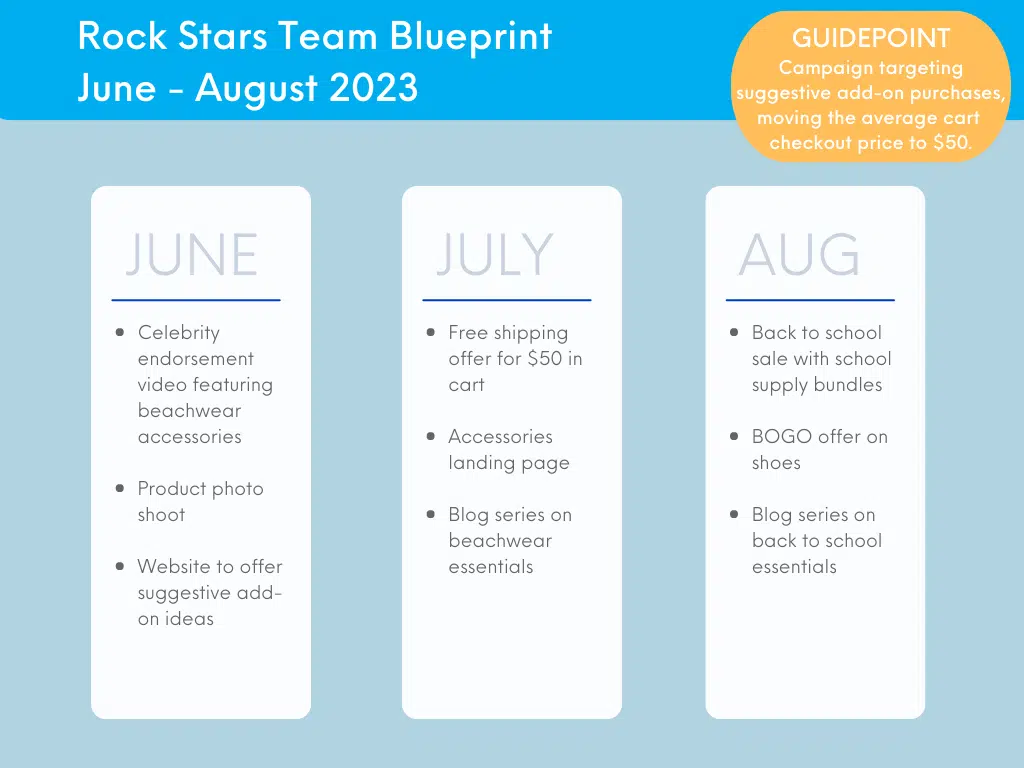Agile advertising is all about change, however how will we stability agility and chaos? Let’s discover three parts of the Agile Advertising Navigator framework the Guidepoint, Blueprint and Advertising Backlog — and the place frequent change is appropriate and what areas to maintain change to a minimal.
Altering the Guidepoint
The Guidepoint is the “large win” for an agile crew that’s determined both quarterly or primarily based on a significant challenge or marketing campaign. It’s what guides the crew towards success and narrows their focus.
The Guidepoint ought to stay fairly fixed as soon as agreed upon by the crew and stakeholders. Because it’s accomplished pretty ceaselessly (not less than as soon as 1 / 4) and is so high-level, it shouldn’t have to vary. The one motive {that a} Guidepoint would change is that if there was a significant shift in enterprise priorities at a better stage than the crew.
Dig deeper: MetLife makes use of agile advertising to unleash pet insurance coverage gross sales
For instance, your crew’s quarterly Guidepoint is:
- Create an omni-channel advertising marketing campaign to enhance our natural magnificence gross sales by 20% this quarter.
You simply discovered that the natural magnificence line is being acquired by one other firm and it’s not a precedence for your online business stakeholders. This sort of enterprise change would require a pivot.
Nevertheless, if it was just because a stakeholder desires to do one thing else now, that may require a dialog as a result of interrupting a crew’s mojo will significantly impression productiveness.
Basic rule: The Guidepoint shouldn’t change.
Altering the Blueprint
The Blueprint is the quarterly roadmap of labor the crew makes use of to satisfy its Guidepoint. That is meant to be versatile slightly than set in stone, and shifts and adjustments to the Blueprint throughout its shelf life (usually three months) are completely acceptable.
The crew and its enterprise stakeholders ought to evaluation it collectively commonly (each week or two) to see if the work listed remains to be the best precedence. As a result of agile advertising is all about testing and studying, the crew could have found what they thought was an excellent concept isn’t panning out and they should pivot — and that’s okay. It’s inspired to pivot away from work that isn’t performing as anticipated and to strive one thing new.

Basic rule: The Blueprint can change.
Altering the Advertising Backlog
The Advertising Backlog is the prioritized ordered checklist of labor that the crew plans to do sooner or later. This artifact is supposed to be versatile and altering, so re-ordering the backlog, altering work, including work and deleting work are inspired. That is simple as a result of the crew hasn’t invested any time in doing this work but.
Nevertheless, the place to proceed with warning is when work strikes from the Advertising Backlog and into the five- or 10-day cycle. That is when the crew is actively engaged on executing ways and switching priorities at this level is discouraged.
Whereas the whole lot in agile advertising needs to be checked out pragmatically and never rigidly, altering work midstream may cause frustration from crew members and the dearth of capacity to perform something. So, proceed with warning on any adjustments throughout this time.
Basic rule: Adjustments are inspired at any time within the Advertising Backlog. Nevertheless, as soon as work strikes from the backlog into the cycle, adjustments have a huge impact on productiveness, so proceed with warning.
Get MarTech! Day by day. Free. In your inbox.
Opinions expressed on this article are these of the visitor writer and never essentially MarTech. Workers authors are listed right here.

